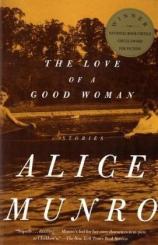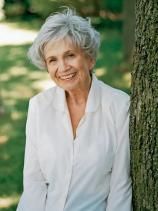Reading Group Guide
Discussion Questions
The Love of a Good Woman

1. In the first story, "The Love of a Good Woman," how has the town of Jutland, its way of life and its mores, affected Enid's character and desires and helped to mold her into the person she is? What does she want from life and what compromises has she made? Does she believe Mrs. Quinn's tale of murder? If so, does it make Rupert more, or less, attractive to her? What exactly does she want from Rupert?
2. What does the author accomplish by dividing "Jakarta" into two parts--the distant past and the present? In what essential way do the two marriages (Kath and Kent; Sonje and Cottar) differ? How are Kath's and Sonje's different attitudes to marriage borne out in the subsequent courses of their lives? Might Sonje's conviction that Cottar is still alive be true, or is it merely an attempt to hold on to a remnant of her former happiness?
3. In "Cortes Island," why did the narrator and her husband decide to marry, and how does the marriage evolve? Does the author imply that the same evolution occurs in many, or most, marriages? What sort of reflection do the Gorries and their rather grotesque marriage and menage cast upon that of their young lodgers? Why does Mr. Gorrie want the narrator to know about his past? Why is Mr. Gorrie, rather than any other man, featured in the narrator's erotic dreams? How does the narrator's sense of self change over the course of her story?
4. In what ways are Eve and Sophie in "Save the Reaper" similar in character, and in what ways are they different? Would you say that Sophie, either consciously or unconsciously, has modeled her life on her mother's? If so, is the situation changing? Why does Eve, in spite of her obvious fears, give the vagrant girl directions to her house? What might the title of the story (a quotation from Alfred, Lord Tennyson's poem "The Lady of Shallott") signify?
5. How does Pauline, in "The Children Stay," perceive marriage and family life? Does the author imply that the pretenses and the feeling of imprisonment that Pauline experiences are present, to some degree, in every marriage? Is the "bleakness" Pauline senses in herself and her father-in-law due to their situations, or their characters? Pauline says at the end that Jeffrey was not Orphée. Is she being honest? In what ways does "The Children Stay" echo or parallel the story of Orpheus and Eurydice? What role does the idea of fate play for the various characters?
6. How does Karin in "Rich As Stink" perceive the dynamic between Rosemary, Derek and Ann? How closely does her perception correspond with the reality? Would you agree with Karin that Derek has "given up on" both Rosemary and Ann (p. 236)? How much has Rosemary's wealth to do with her acceptance by Derek and Ann? Why doesn't Ann want Derek to see Karin in her wedding dress, and why is Karin determined to wear it to the dinner party? What sort of future do you envision for Rosemary? For Karin?
7. In "Before the Change," what do the narrator's experiences at home with her father tell her about her relationship with Robin, its illusions, and its unhappy end? Robin differentiates "ideas" and "life"; is he being cynical or simply realistic? How are the narrator's beliefs about abortion and parenthood affected by her own mother's death in childbirth, and how are these beliefs modified during the course of the story? How do her ideas about love, too, undergo changes? Might she have made different decisions about her love affair and pregnancy if she had it to do over again?
8. In "My Mother's Dream," what has the dream, described at the beginning of the story, to do with Jill's actual life and experiences? Has she known what it is to "leave" a baby? What relation does Jill's struggle with the baby have to her struggle with George's family and his memory? Would you say that this mother-child struggle is a universal one, extreme though it is in Jill's case?
9. How do the many women Munro writes about respond to sex, marriage, and motherhood? Can these women, different as they are, be said to hold certain characteristics in common? Which marriages--or sexual relationships--in her stories might be considered successful? What tends to happen to marriages over the course of decades? How do women's ideas about love and family change as they age?
10. Munro has said that she has always been interested in "the way women circumvented the rules," and most of the women in these stories function within limits posed by convention, class, and gender--even unconventional women like Eve and Sophie. To what degree do these limits determine their various lives? What emotional price does the flouting of these limits exact? When Munro's women take risks, do they tend to be rewarded for them?
11. What techniques does Munro use to get across the feeling of time passing, of life changing and moving on, of people aging? Why do you think Munro so often chooses to show her characters' entire life spans, rather than using the "slice of life" technique so many authors favor? How would you compare Munro's use of time with that of other short story writers you are familiar with?
12. The Carstairs stories in Open Secrets and the title story in The Love of a Good Woman paint vivid portraits of a community as an organic whole. What sort of characters does she choose to best represent these communities? What do we learn about the lives, expectations, and values of these towns? How do Munro's techniques resemble (or differ from) those of other authors who have given us such group portraits; for example, Eudora Welty with The Golden Apples, James Joyce with Dubliners, or Sherwood Anderson with Winesburg, Ohio?
The Love of a Good Woman
- Publication Date: August 29, 2012
- Paperback: 352 pages
- Publisher: Vintage
- ISBN-10: 0375703632
- ISBN-13: 9780375703638








